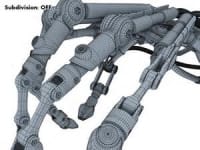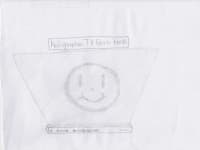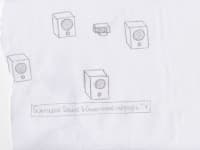Summary
As times are changing, so are the way that doctors perform their duties. A new trend in nursing has arisen with the coming of the Registered Nurse Practitioner. This is a Registered Nurse that has obtained a doctorate level degree. This allows for doctor to not be present during the time when the nurse is practicing; at least not in the room. There still has to be one licensed medical doctor per so many nurses present on each shift. Furthermore, a Licensed Doctor is required for performing such things as surgeries or operations. This design will allow for greater portability of the physician during medical procedures and for medical research. It is a holographic 3-D microscopic mobile projector TV that has mobile robotics capabilities.
Explanation
The holographic projector microscope TV was made with a base that projects light upward, into the ambient air. The background light wave provides a thick canvas that can separate itself easily from the other elements in the room, sort of like a sun ray in which onlookers can view fuzzy air particles, only this will be thick enough that all levels of eyesight can see the light wave. The light wave will maintain an intensity that will not keep other light waves from projecting their shades, or else it will contain reflective elements that will allow the other waves to dominate in the forefront. These light waves will draw in afterwards to fill in color coordinates that will relegate a moving picture.
3D Capabilities
With the inclusion of the surround system projection theater, this holographic image can come to life as if a 3D model right in the middle of the laboratory or workroom. The projectors will surround a single spot, allowing the light to be draw towards each corner of the room, as if a cube. The color waves resulting will create shadows and shade that will give a true 3-D representation from moving multidirectional cameras in the laboratory.
The light waves will bend as the doctor/researcher places hands within the beams and moves them about. This movement changes the frequency of the wavelengths and pushes them in other directions to be picked up by the projector's acuity sensor and it will send a signal back so that the signal will ask certain robotics figures to perform minor acts. This includes incisions, laser procedures, tube injections and many other medical processes. It can also be applied towards medical research where the equipment is combined to cameras that can take multiple quick shots of processes and slow them to be viewed in very slow-mo type movement with a reduction in vibrations in 3-D; full process can be viewed at all angles at one time. This will allow researchers to fully view the way that different chemicals, enzymes and microbes are interacting together.
Accessories
Researchers and doctors can actually navigate nanoscale microscope through veins and other passages inside the body to view complete systems interactions on the 3-D large projector, from inside the body.
Like this entry?
-
About the Entrant
- Name:Bonnie Aylor
- Type of entry:individual
- Software used for this entry:lights software, touch sensitive sofware, CAD, robotics, word, pdf
- Patent status:none








